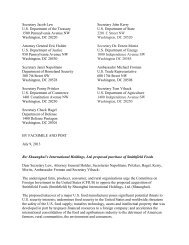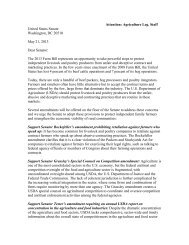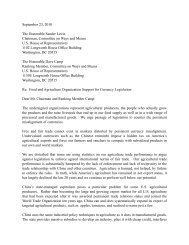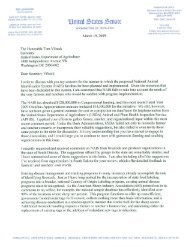Exhibit 8, 100416 Brazil FMD Risk Evaluation - R-Calf
Exhibit 8, 100416 Brazil FMD Risk Evaluation - R-Calf
Exhibit 8, 100416 Brazil FMD Risk Evaluation - R-Calf
Create successful ePaper yourself
Turn your PDF publications into a flip-book with our unique Google optimized e-Paper software.
Annex 5. Epidemiologic Characteristics of Rinderpest<br />
Etiologic Agent<br />
Family Paramyxoviridae, Genus Morbillivirus<br />
Status in the United States<br />
The United States has been historically free from rinderpest.<br />
Distribution<br />
Historically the virus was widely distributed throughout Europe, Africa, Asia and West Asia, but<br />
never became established in either the Americas or Australia/New Zealand. Rinderpest is an OIE<br />
listed disease. [83] In Africa it has been eradicated from several countries and sub-regions, and is<br />
normally absent from the northern and southern parts of the continent. Rinderpest occurs in the<br />
Middle East and in southwestern and central Asia [84].<br />
Epidemiology<br />
Rinderpest is a highly fatal viral disease of domestic cattle, buffaloes and yaks. It also affects sheep,<br />
goats and some breeds of pigs (Asian pigs seem more susceptible than African and European pigs).<br />
Rinderpest can infect a large variety of wildlife species, including African buffaloes, eland, kudu,<br />
wilde-beest, various antelopes, bushpigs, warthog and giraffes but is rare among camelids [83, 84,<br />
85].<br />
Transmission of rinderpest can occur through direct or close indirect contacts. The usual route of<br />
infection is via the respiratory tract with an incubation period of generally 4 to 5 days following<br />
natural exposures but which may range from 3 to 15 days. Viral shedding begins 1-2 days before<br />
pyrexia in tears, nasal secretions, saliva, urine and feces and typically continues for 8 to 9 days after<br />
the onset of clinical signs. Blood and all tissues are infectious before the appearance of clinical<br />
signs.<br />
Rinderpest can take several clinical presentations; classic, peracute, subacute and atypical. There is<br />
no carrier state following infection. The classic form is characterized by a 2- to 3-day period of high<br />
fever, depression, anorexia, reduced rumination, increased respiratory and cardiac rate, congested<br />
mucus membranes, intense mucopurulent lachrymation and excessive salivation. Gastrointestinal<br />
signs appear when the fever drops with profuse hemorrhagic diarrhea. Dehydration, abdominal pain,<br />
abdominal respiration, weakness, recumbency and death generally occur within 8-12 days. In rare<br />
cases, clinical signs regress by day 10 and recovery occurs by day 20-25.<br />
The peracute form has no prodromal signs and is characterized by high fever (>40-42°C) and death.<br />
The peracute form occurs in highly susceptible young and newborn animals. The subacute form has<br />
a low mortality rate and a similar clinical presentation to the classic form. The atypical form is<br />
characterized by irregular pyrexia with mild or no diarrhea.<br />
Rinderpest virus is relatively resistant and is stable between pH 4.0 and 10.0 but is susceptible to<br />
most common disinfectants including lipid solvents. The virus remains viable for long periods in<br />
chilled or frozen tissues. Small amounts of rinderpest virus may survive relatively high<br />
temperatures—56°C (133°F) for 60 min or 60°C (140°F) for 30 min.<br />
APHIS <strong>Evaluation</strong> of the Status of the <strong>Brazil</strong>ian State of Santa Catarina 77











